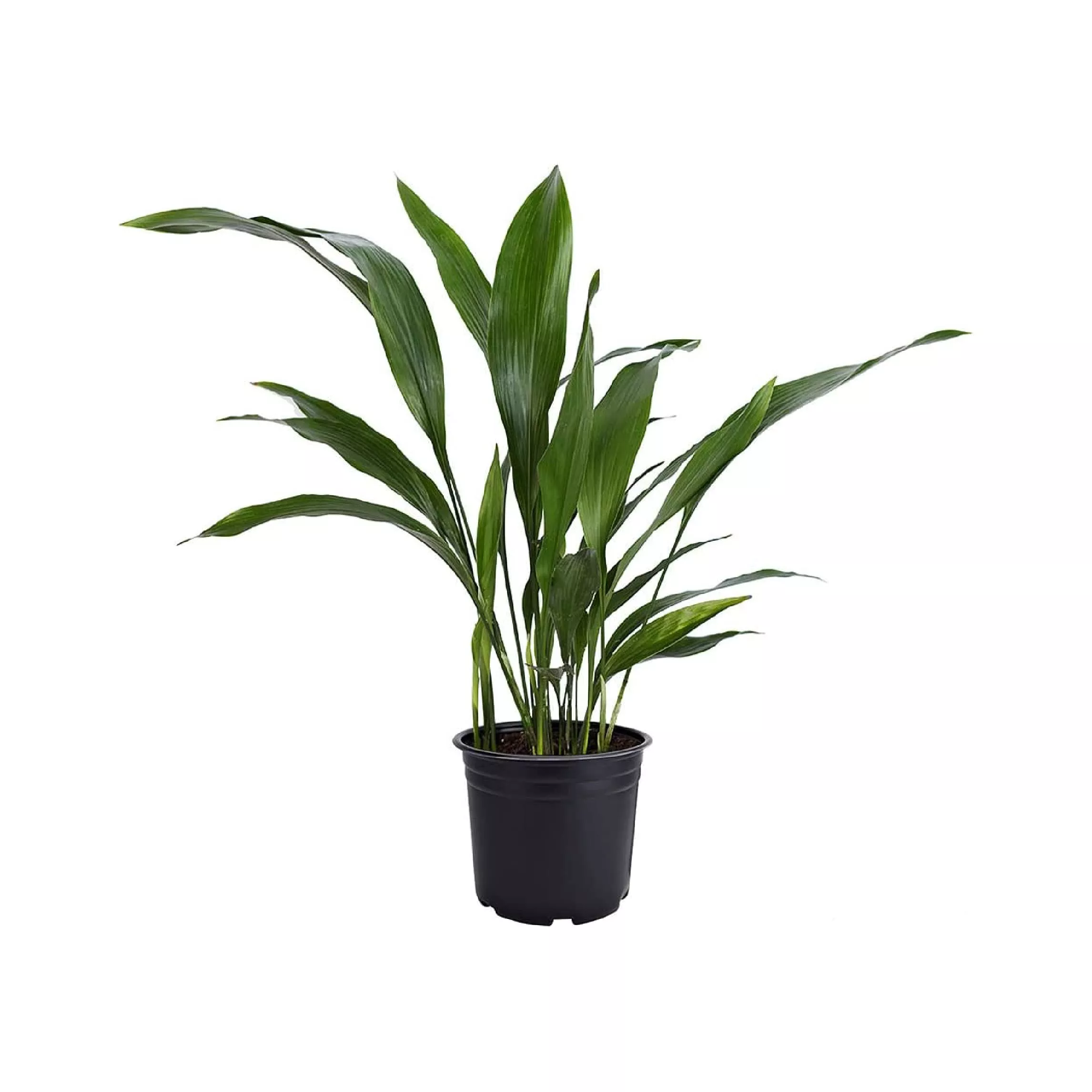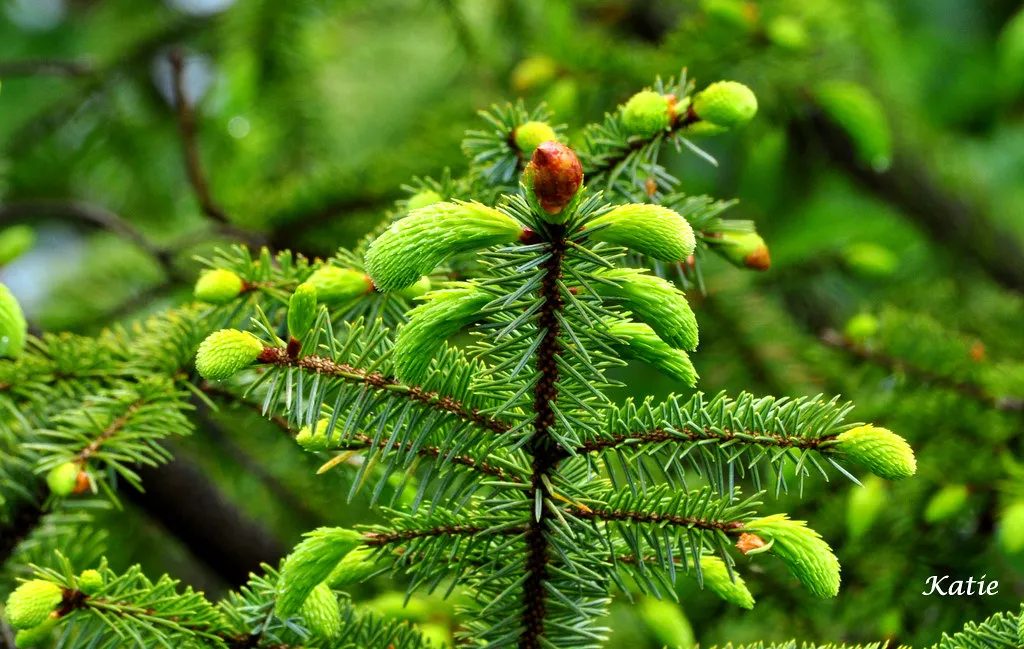The Cast-Iron Plant is a resilient, low-maintenance houseplant. It thrives in low light and neglect.
The Cast-Iron Plant, scientifically known as Aspidistra elatior, is beloved for its durability and ease of care. This hardy plant can thrive in low light conditions and withstand neglect, making it perfect for busy or novice gardeners. Its lush, green leaves add a touch of elegance to any space.
Originating from the forest floors of Japan and Taiwan, the Cast-Iron Plant is well-suited to indoor environments. It requires minimal water and can tolerate a range of temperatures. With its ability to endure tough conditions, this plant makes a charming and reliable addition to any home or office.
Introduction To Cast-iron Plants
The cast-iron plant is a hardy and low-maintenance houseplant. Known for its resilience, it thrives in various conditions. This plant is perfect for beginners and experienced gardeners alike.
Historical Background
The cast-iron plant, scientifically known as Aspidistra elatior, has a rich history. Native to the forests of Japan and Taiwan, it was first introduced to Europe in the 19th century. Victorian homes loved this plant for its ability to endure low light and neglect. Its name, “cast-iron,” reflects its tough nature and durability.
Popular Varieties
There are several popular varieties of the cast-iron plant:
- Aspidistra elatior ‘Variegata’: Features green leaves with white stripes.
- Aspidistra elatior ‘Milky Way’: Boasts dark green leaves with white spots.
- Aspidistra elatior ‘Asahi’: Has leaves with white tips that look frosted.
These varieties add visual interest to any indoor garden. They are equally hardy and easy to care for.
Here is a comparison table of these popular varieties:
| Variety | Leaf Color | Special Features |
|---|---|---|
| Variegata | Green with white stripes | Attractive variegation |
| Milky Way | Dark green with white spots | Starry appearance |
| Asahi | Green with white tips | Frosted look |
Each variety adds a unique charm to your indoor space. They are all excellent choices for low-light areas.
Ideal Growing Conditions
The Cast-Iron Plant is known for its resilience and ease of care. To thrive, it requires specific growing conditions. This section delves into the ideal growing conditions for your Cast-Iron Plant.
Light Requirements
The Cast-Iron Plant prefers low to moderate light. It thrives in shady spots, making it perfect for indoor environments. Avoid direct sunlight, which can scorch the leaves.
Place the plant in a room with indirect light. North-facing windows are ideal. If the room is too dark, use artificial light to supplement.
Temperature And Humidity
The Cast-Iron Plant enjoys a temperature range between 60°F and 75°F (15°C to 24°C). It can tolerate lower temperatures but avoid freezing conditions.
Maintain moderate humidity levels. Use a humidifier if the air is too dry. Mist the leaves occasionally to boost humidity.
| Condition | Ideal Range |
|---|---|
| Light | Low to moderate, indirect |
| Temperature | 60°F to 75°F (15°C to 24°C) |
| Humidity | Moderate, occasional misting |
Soil And Potting Needs
The Cast-Iron Plant, known for its resilience, thrives in various conditions. Proper soil and potting are crucial for its health. Let’s explore the best soil types and repotting tips for your Cast-Iron Plant.
Soil Type
The Cast-Iron Plant prefers well-draining soil. This helps prevent root rot. Choose soil rich in organic matter. A mix of potting soil and perlite works well.
Consider adding peat moss for better drainage. Here’s a simple soil mix recipe:
- 2 parts potting soil
- 1 part perlite
- 1 part peat moss
This mix ensures the roots get enough air. It also retains the right amount of moisture.
Repotting Tips
Repot your Cast-Iron Plant every 2-3 years. This gives the roots more space. Follow these steps for repotting:
- Choose a pot 1-2 inches larger in diameter.
- Fill the new pot with fresh soil mix.
- Gently remove the plant from the old pot.
- Shake off old soil from the roots.
- Place the plant in the new pot.
- Fill the gaps with fresh soil.
- Water the plant thoroughly.
Ensure the pot has drainage holes. This prevents water from sitting at the bottom. Avoid over-watering your plant after repotting. Let the soil dry out a bit between waterings.

Credit: littleprinceplants.com
Watering Guidelines
Watering the cast-iron plant correctly is crucial for its health. This plant is known for its toughness. Yet, improper watering can still harm it. Follow these guidelines to keep your plant thriving.
Frequency Of Watering
The cast-iron plant prefers moderate watering. Water the plant every 7-10 days. Ensure the soil dries out between waterings. Use a moisture meter to check soil dryness. Overwatering can lead to root rot.
Signs Of Overwatering
Overwatering your cast-iron plant can cause issues. Watch for these signs:
- Yellowing leaves
- Mushy stems
- Moldy soil
- Unpleasant odor from the soil
If you see any of these signs, reduce watering. Allow the soil to dry out. Make sure the pot has proper drainage holes.
Fertilization Practices
Proper fertilization is essential for the healthy growth of the Cast-Iron Plant. This hardy plant thrives with the right nutrients. Understanding the type of fertilizer and the application schedule is key.
Type Of Fertilizer
The best fertilizer for the Cast-Iron Plant is a balanced, slow-release fertilizer. Look for one with an equal ratio of nitrogen, phosphorus, and potassium. A 10-10-10 or 20-20-20 formulation works well.
| Fertilizer Type | Ratio |
|---|---|
| Balanced Slow-Release | 10-10-10 or 20-20-20 |
| Liquid Fertilizer | 1-1-1 or 3-1-2 |
Liquid fertilizers can also be used. Choose a diluted form with a ratio like 1-1-1 or 3-1-2. This ensures the plant gets nutrients without risk of over-fertilization.
Application Schedule
Apply fertilizer during the growing season, typically from spring to early fall. Fertilize every 4-6 weeks for best results. Avoid fertilizing in winter when the plant is dormant.
- Spring: Begin fertilizing as new growth appears.
- Summer: Continue every 4-6 weeks.
- Fall: Reduce frequency as growth slows.
- Winter: Stop fertilizing until spring.
Always follow the package instructions for the correct amount. Over-fertilizing can damage the plant. Less is more with the Cast-Iron Plant. Monitor the plant’s health and adjust as needed.
Pruning And Maintenance
Caring for your Cast-Iron Plant involves regular pruning and maintenance. This ensures it remains healthy and vibrant. Below, we explore key aspects of maintaining your plant.
Trimming Dead Leaves
Dead leaves can make your plant look unhealthy. Regularly trim them to keep the plant looking fresh. Use clean scissors or pruning shears. Cut the leaf at the base near the soil. Always dispose of the trimmed leaves properly.
Here are the steps to trim dead leaves:
- Inspect the plant for brown or yellow leaves.
- Use clean tools to avoid spreading disease.
- Cut the leaves at the base, near the soil.
- Dispose of the leaves in a compost bin or trash.
Pest Control
Pests can harm your Cast-Iron Plant. Regular inspection helps catch problems early. Common pests include spider mites and scale insects. Look for signs like webbing or sticky residue.
Here are some tips for pest control:
- Inspect the plant regularly for pests.
- Wipe leaves with a damp cloth to remove dust and pests.
- Use insecticidal soap or neem oil for treatment.
- Isolate infected plants to prevent spreading.
For severe infestations, consult a local nursery for advice. Proper care keeps your Cast-Iron Plant healthy and pest-free.
Propagation Techniques
Growing the Cast-Iron Plant can be rewarding. Propagation is a key part of this. There are two main methods: Division and Seed Propagation. Each method has its own steps and benefits.
Division Method
The Division Method is simple and effective. It’s perfect for beginners. Follow these steps:
- Carefully remove the plant from its pot.
- Gently shake off excess soil.
- Look for natural divisions in the root system.
- Use a sharp knife to cut the plant into sections.
- Ensure each section has roots and leaves.
- Plant each section in a new pot with fresh soil.
- Water the new plants lightly.
This method ensures healthy growth and reduces crowding. It’s also quick and easy.
Seed Propagation
Seed Propagation is more challenging but rewarding. Here are the steps:
- Collect seeds from a mature Cast-Iron Plant.
- Soak the seeds in water for 24 hours.
- Fill a seed tray with potting mix.
- Plant the seeds 1 inch deep in the soil.
- Keep the soil moist but not waterlogged.
- Place the tray in a warm, shaded area.
- Wait for the seeds to germinate, which can take weeks.
Seed Propagation allows you to grow many plants at once. It requires patience and careful monitoring.

Credit: www.amazon.com
Common Issues And Solutions
Even the hardy cast-iron plant faces some challenges. Identifying and addressing these issues ensures your plant thrives. Below are common problems and their solutions.
Yellowing Leaves
Yellowing leaves can signal several issues. Here are the main causes:
- Overwatering: Ensure the soil dries out between waterings.
- Underwatering: Water your plant thoroughly once the soil feels dry.
- Poor Light: Provide bright, indirect light.
- Nutrient Deficiency: Use a balanced houseplant fertilizer.
Root Rot
Root rot is a severe issue caused by overwatering. Follow these steps to manage it:
- Check Roots: Gently remove the plant from its pot.
- Inspect Roots: Healthy roots are white; rotted roots are brown or black.
- Trim Rotted Roots: Use sterilized scissors to cut away rotted sections.
- Repot: Place the plant in fresh, well-draining soil.
- Adjust Watering: Let the top inch of soil dry out before watering again.
By addressing these issues, your cast-iron plant will stay healthy and beautiful.
Benefits Of Cast-iron Plants
The Cast-Iron Plant is a beloved choice for many indoor gardeners. Its resilience and low-maintenance nature make it perfect for those with busy lives. But did you know it offers more than just ease of care? Let’s explore the benefits of Cast-Iron Plants in detail.
Indoor Air Quality
One of the most impressive benefits is its ability to improve indoor air quality. The Cast-Iron Plant filters toxins from the air. These include formaldehyde and benzene. This makes your home healthier and safer.
According to NASA’s Clean Air Study, houseplants like the Cast-Iron Plant are natural air purifiers. They absorb pollutants through their leaves and roots. This process helps in reducing indoor air pollution.
| Toxin | Source |
|---|---|
| Formaldehyde | Furniture, cleaning products |
| Benzene | Paints, detergents |
Aesthetic Appeal
The Cast-Iron Plant is not just functional; it’s also beautiful. Its dark green leaves add a touch of elegance to any room. The plant has a classic look that suits various interior styles.
Whether you place it in your living room, bedroom, or office, it enhances the space. Its lush foliage creates a calming and inviting atmosphere. The plant’s vertical growth pattern makes it ideal for corners and narrow spaces.
- Low-maintenance: Requires minimal care.
- Shade-tolerant: Thrives in low light conditions.
- Versatile: Complements various decor styles.
The Cast-Iron Plant is a versatile and beneficial addition to any home. Its ability to improve air quality and its aesthetic appeal make it a must-have.

Credit: oxy-plants.com
Frequently Asked Questions
What Is A Cast-iron Plant?
A Cast-Iron Plant is a hardy, low-maintenance plant known for its resilience. It’s perfect for indoor and outdoor settings.
How Do You Care For A Cast-iron Plant?
To care for a Cast-Iron Plant, provide low to moderate light. Water it when the top inch of soil is dry.
Can Cast-iron Plants Grow Indoors?
Yes, Cast-Iron Plants thrive indoors. They tolerate low light and are perfect for low-maintenance indoor gardening.
What Soil Is Best For Cast-iron Plants?
Cast-Iron Plants prefer well-draining soil. A mix of potting soil and sand works well for them.
Conclusion
Caring for the cast-iron plant is simple and rewarding. This hardy plant thrives in low light and minimal care. Enhance your indoor space with its lush, green foliage. Start growing a cast-iron plant today and enjoy its enduring charm. Your home will benefit from its timeless beauty and resilience.



